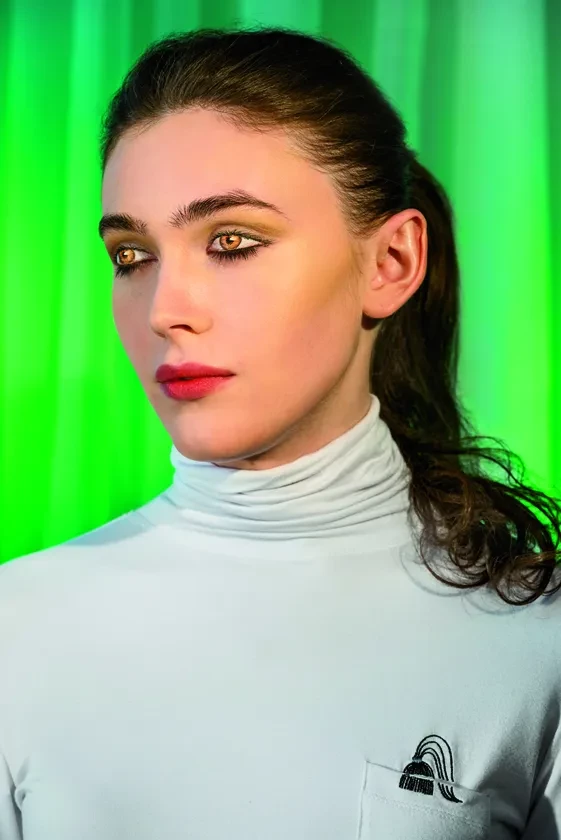April 28, 2015
The six oversize color photographs (all 2015) encircling the viewer in “Laurie Simmons: How We See” present beautiful, disconcertingly dazzling young women. Loosely mimicking high-school yearbook photos, albeit at a monumental scale (almost 6 by 4 feet), the images show their subjects from the shoulders up against colored curtains—green, pink, gold and violet. Their heads cocked at slightly askew angles and bathed in radiant light that appears to sparkle off their strangely vacant eyes, they could be the Stepford millennials.
Look more closely and you’ll discover that their placid gazes are, in fact, trompe l’oeil illusions, expertly painted on top of their closed eyelids. This is a technique common in the “doll girls” community, in which young women around the world alter themselves through makeup, costume and sometimes surgery to look like dolls and Japanese anime characters, and then share the results online. Simmons hired fashion models and a makeup artist to emulate the practice. It makes sense that this cultural phenomenon would be fascinating to Simmons, who first mined the psychological power of dolls in the late 1970s, in her groundbreaking photographs of figurines in staged dollhouse setups. Over her career, she has explored gender stereotypes and the artifice of the suburban idyll through her photographic manipulation of toys, puppets and ventriloquist’s dummies. Now, she is training her lens on real girls as living dolls and inviting questions about the artifice of the digital world that younger generations inhabit.
Simmons is masterful in the lighting and posing of her models, who at a distance seem to flicker between warm-blooded and animatronic. Ultimately, however, the high-definition prints leave no doubt that these are living girls, as the images pick up every pore and hair follicle. Even when the trick of the painted lids reveals itself, the illusion remains convincing to a certain extent. And when it doesn’t, the girls—the windows to their souls painted shut—seem immobile and stripped of consciousness, hovering in a kind of limbo as marvelous camera-ready constructions.
While the physical transformations performed in the real “doll girl” subculture may seem extreme and profoundly disturbing, Simmons’s more subtle co-opting of this painted-lid technique calls attention to the different ways women have always curated their appearances and personas, now both easier and more dangerous in the online world. Teenage girls may be their own artists, obsessing over hair and makeup for selfie photo shoots, but once their idealized versions of themselves are released digitally, the images can be forwarded and manipulated indiscriminately. Whether showing housewife figurines inside color-coordinated dollhouses or models morphing into dolls to be admired and “liked,” Simmons opens our eyes to the uncomfortable space between image and self.
